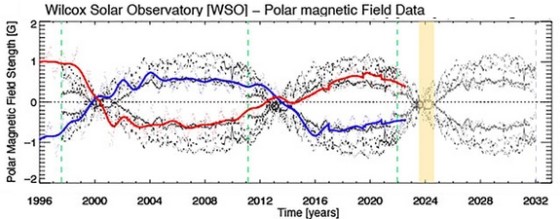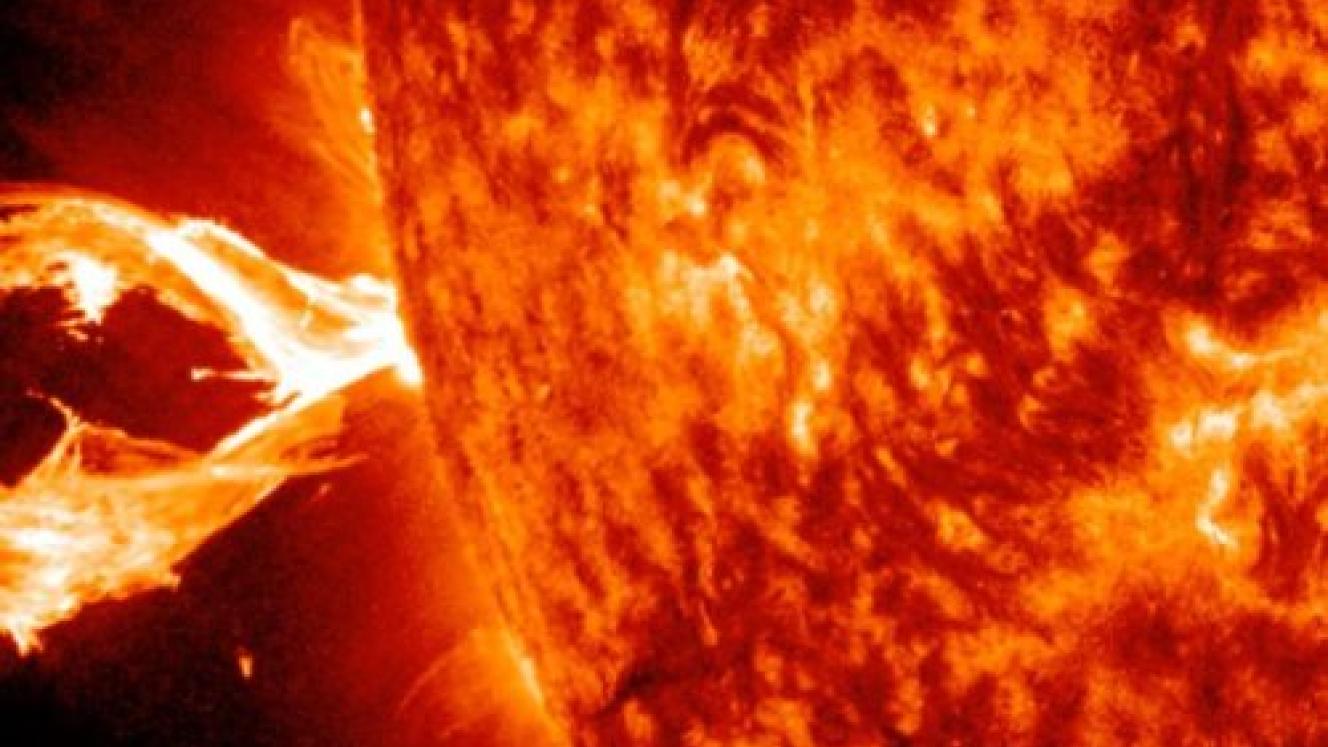Dr Tony Phillips of Spaceweather.com posted that Solar Maximum is coming—may be this year earlier than predicted. New research by a leading group of solar physicists predicts maximum sunspot activity in late 2023 or early 2024, a full year ahead of other forecasts.
"This is based on our work with the Termination Event," explains Scott McIntosh, lead author of a paper describing the prediction, published in the January 2023 edition of Frontiers in Astronomy and Space Sciences.

Above: The red curve shows McIntosh et al's new prediction of an early Solar Max.
The "Termination Event" is a relatively new concept in solar physics. It is a period of time on the sun as short as one month when magnetic fields from one solar cycle abruptly die allowing magnetic fields from the next solar cycle to take over. After a Termination Event, the new solar cycle skyrockets.
McIntosh and colleagues have studied termination events for many solar cycles, and they have discovered that its timing can predict the future. "Our latest work pinpoints the Termination Event between Solar Cycle 24 and Solar Cycle 25 at mid-Dec. 2021," explains McIntosh. "This tells us about the size and date of the next solar maximum."
According to their paper, Solar Max is coming between late 2023 and mid-2024, with a peak total monthly sunspot number of 184±63 (95% confidence). This means Solar Cycle 25 could be twice as strong as old Solar Cycle 24, which peaked back in 2014.

Their forecast jibes with another big event now underway. The sun's global magnetic field is about to flip. This happens near the peak of every solar cycle. Magnetic fields near the sun's poles weaken, change sign, and start growing again in the opposite direction. It's like taking a bar magnet from your refrigerator and flipping it upside down--except this bar magnet is as big as a star.
Measurements from Stanford's Wilcox Solar Observatory (pictured above) confirm that the weakening is underway now, with polar magnetic fields probably crossing zero in no more than a few months. "Historically the zero crossing precedes actual sunspot number maximum by 6 to 12 months," says McIntosh, "so this is in accord with our prediction of an early Solar Max."














